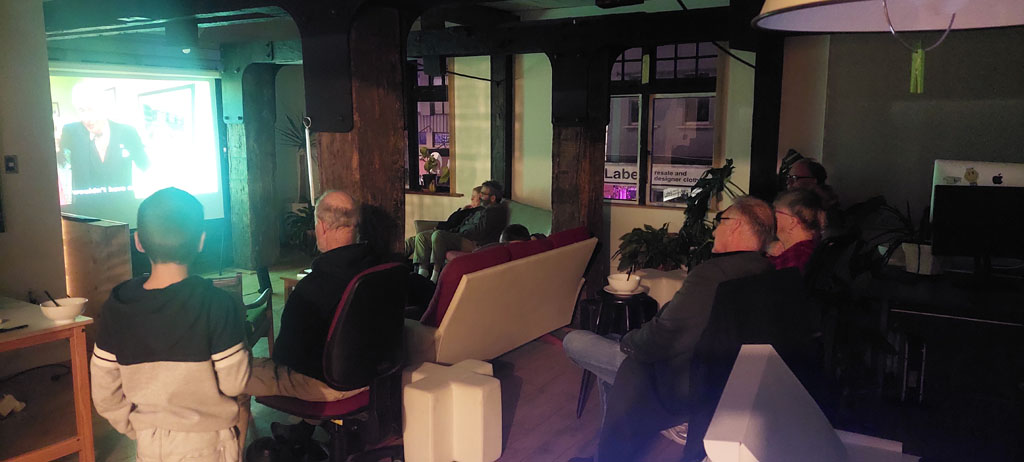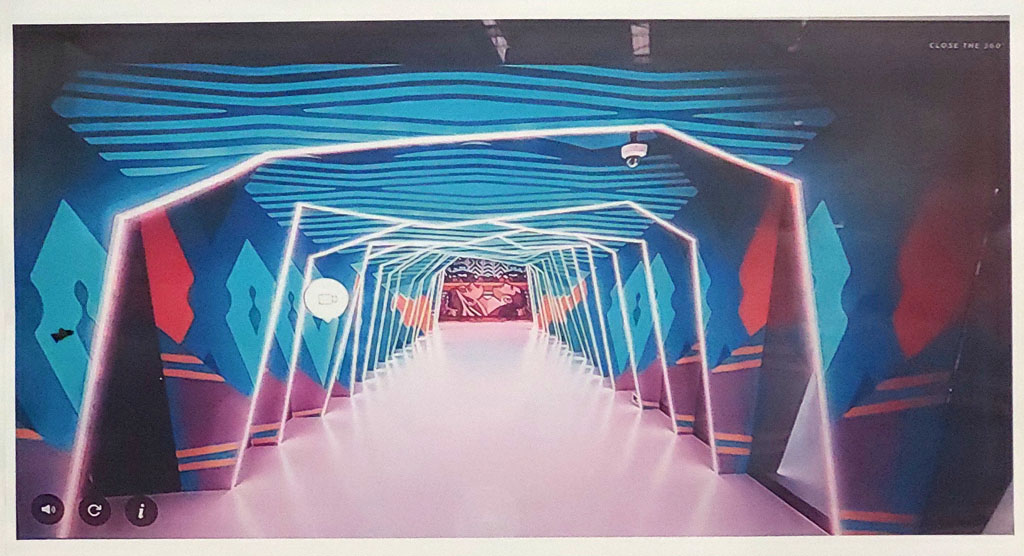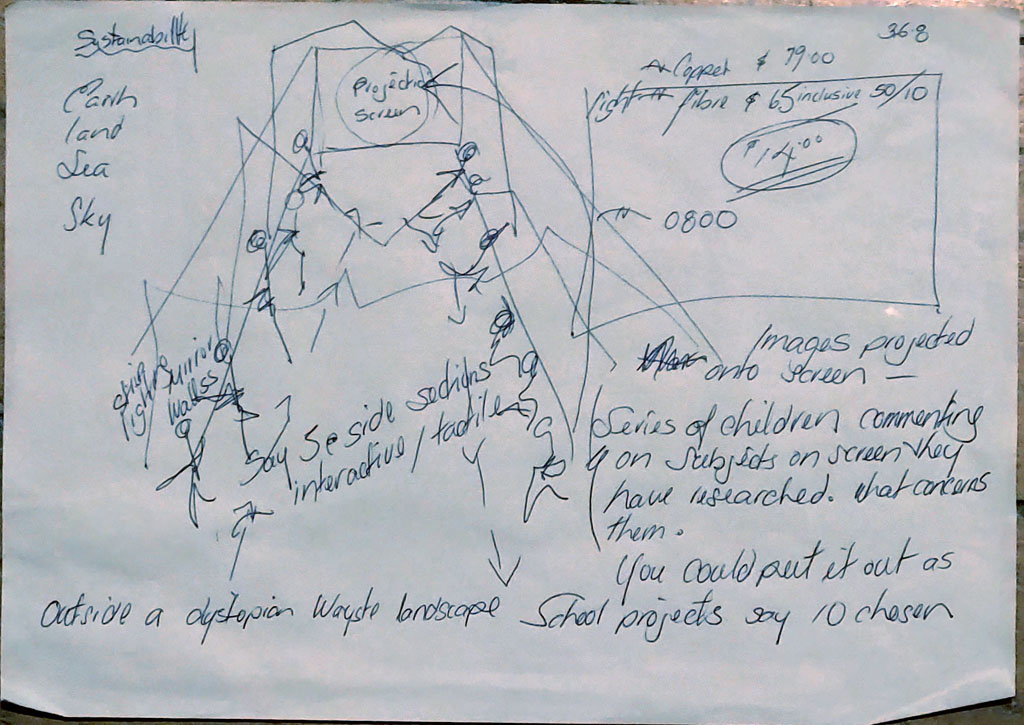It probably wasn’t the ideal film selection for the evening; It was somewhat flustered by the fact I’d left the film I was going to suggest we watch at home.On top of that I’d had problems getting a DVD player that worked (not many computers with a DVD player these days!). I ended up suggesting the film I'd put in to test the DVD player ‘Who Killed the Electric Car’. This is a film I’d first watched around 15 years ago when there really weren’t many electric cars around at all. It was a bit of an eye opener; I hadn’t realised GM had developed an electric car and was even more surprised by the way the project was scrapped and the cars destroyed. I thought this fitted with a recent discussion in our group of the Climate Forum regarding a lack of trust, and in particular why people might distrust the government. It’s also about the way companies create dependencies, that dependency is undermined when you can charge the car yourself at home rather than having to fill it with petrol or hydrogen. The film doesn’t let consumers off the hook, we are also guilty. We have to demand change and we vote with every dollar we spend.
Not a great children's film though and could be half as long. I’ve promised that the children can choose the next film and perhaps I need to rethink the format of the evenings.

As part of the brainstorming session I really wanted to get some key values/aims of the project down to give us a clear direction for the project - these are some of the key messages that I noted from the discussion.
- Sustainability - Environmental awareness
- Looking after each other - moving away from dependency on Council etc.
- Building skills and resources in the community
- Building a community
- Collecting and Sharing information - key life skills
- Metaphysical element - collective consciousness - power of joining force as a collective
- A lot can be done if we work together, but the chance to work alone too (the freedom to do both)
- Education empowering people
- Waking people up - Making the unconscious conscious
- Moving away from capitalism/consumerism
- Change the divide and rule - unification
- Together we can make a change - show examples (from nature - fish?)
- Individualism encouraged in the World - we need to show the power of collaboration
- Harvesting and building from what we can find
- Keeping skills/knowledge alive - easy for multi-generational knowledge/skill to be lost
I have been concerned that we had a lack of cultural diversity in the project currently, but at the same time there is an understandable eagerness from the group to keep the momentum going and begin working on the lab and on projects. There was also a clear need to better define what the project is. The general consensus was that we could create an environment in the lab that could be modular, allowing elements of the lab to be created from different perspectives/cultures (in a similar way to elements of a museum), or invite other groups/organisations to create their own lab which I had thought might happen once we’d built the first one, but that could happen earlier.
In fitting with the modular design Marcus has a proposal which was quite different from what I’d been thinking. This is the great thing about working as a group though - people bring their own perspectives and it can expand your thoughts. The design has continued to grow on me since the meeting as I think it provides a way forward, a way to keep the momentum of the project and also a way that we can bring in diverse perspectives into the project.
The design is of a relatively simple structure for the container. Several bays (4 or 5 for example) are created down earth side, styled in a way that provides a ‘wow’ factor with colour/light and mirrors to give the illusion of a bigger space. Each bay can house a separate project. At the end of the container is a screen onto which images/video/data can be projected.

Outside of the container Marcus suggests a dystopian wasteland with a sculptural garden of rubbish.
Each of the projects for the bays could be developed by different schools/colleges/organisations etc. providing an opportunity to take a different approach/style to the project.

This could be a challenge to schools/groups to research an environmental problem, as well as a possible solution or a way of monitoring that problem and to propose a project around those. Up to ten projects could then be selected and then the designers would be invited to build (with our help if needed, in particular we could help provide any materials etc. needed).
We could require that the projects could be in the form of a game/puzzle that the visitors to the Lab must solve - perhaps before they can move on to the next booth.
If the projects are modular then they could be swapped out and new ones added and the projects could also be put in other temporary locations.
We could still have projects around power, water collection, etc.
At the end I showed "A Pale Blue Dot" - it is worth listening to if you haven't already (it's short, just over 3 mins long).
From this distant vantage point, the Earth might not seem of any particular interest. But for us, it's different. Consider again that dot. That's here. That's home. That's us. On it everyone you love, everyone you know, everyone you ever heard of, every human being who ever was, lived out their lives. The aggregate of our joy and suffering, thousands of confident religions, ideologies, and economic doctrines, every hunter and forager, every hero and coward, every creator and destroyer of civilization, every king and peasant, every young couple in love, every mother and father, hopeful child, inventor and explorer, every teacher of morals, every corrupt politician, every "superstar," every "supreme leader," every saint and sinner in the history of our species lived there – on a mote of dust suspended in a sunbeam.
— Carl Sagan


